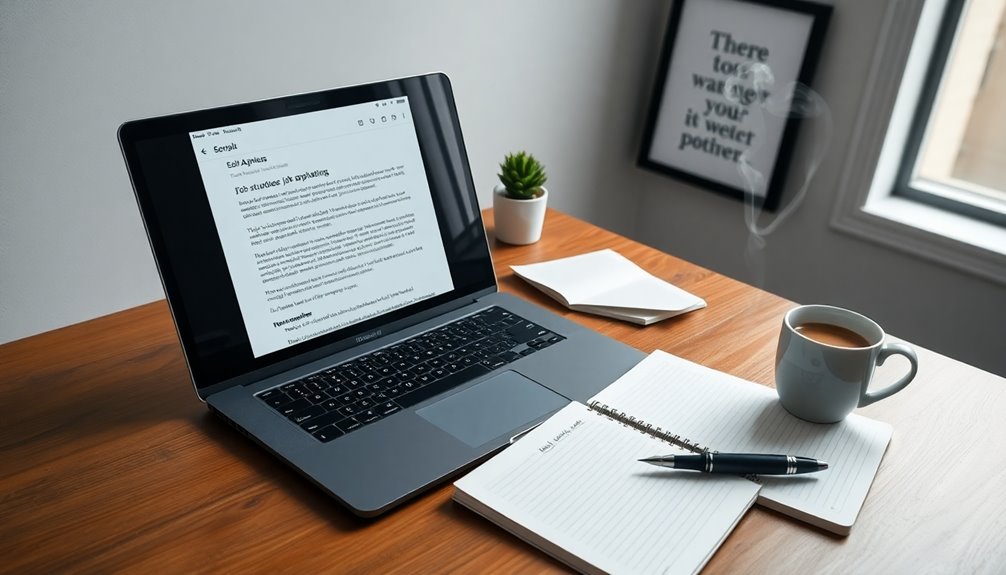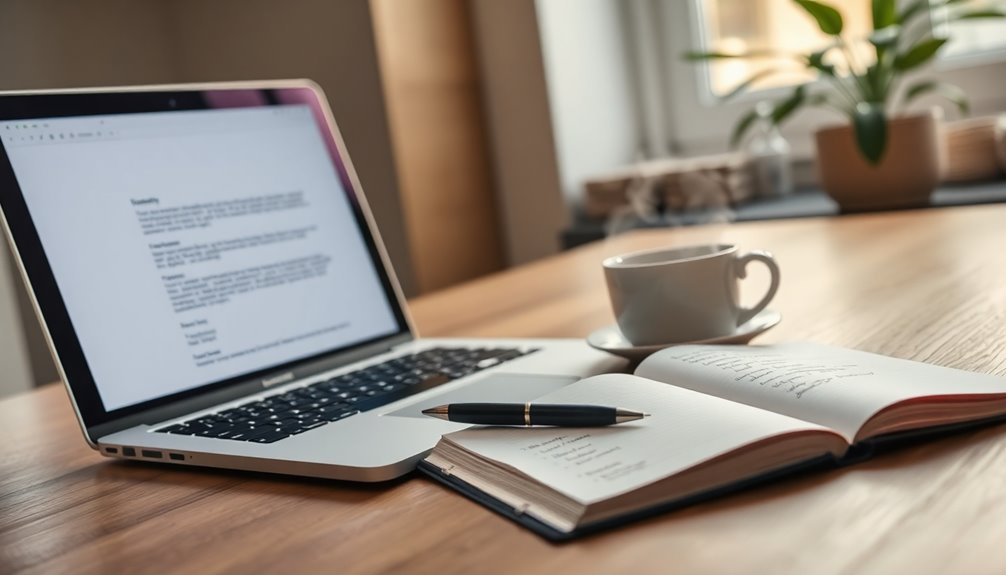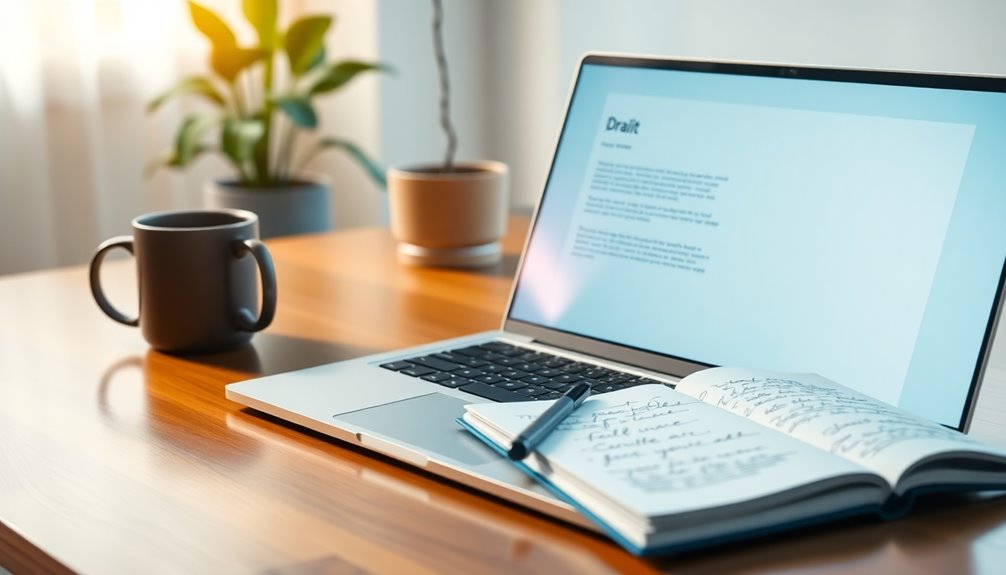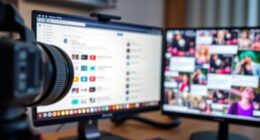When you write a follow-up email after no response, aim for a personal touch. Wait 2-3 days before reaching out again. Start with a friendly greeting and reference any previous interactions to show you care. Create a concise subject line that sparks curiosity. Include a clear call-to-action to guide the recipient's response. Keep your tone professional yet approachable. Remember, timely and personalized emails significantly boost your chances of getting a reply. If you want to tighten your email skills further, there's more to discover on enhancing your follow-up strategies.
Key Takeaways
- Personalize your follow-up email by referencing specific details from previous interactions to enhance relevance and connection.
- Wait 2-3 days after the initial email before following up to avoid appearing overly aggressive.
- Use a compelling subject line to capture attention and increase the likelihood of your email being opened.
- Include a clear call-to-action (CTA) to guide the recipient toward the desired response or next steps.
- Maintain a professional yet approachable tone, acknowledging the recipient's busy schedule to encourage engagement.
Introduction
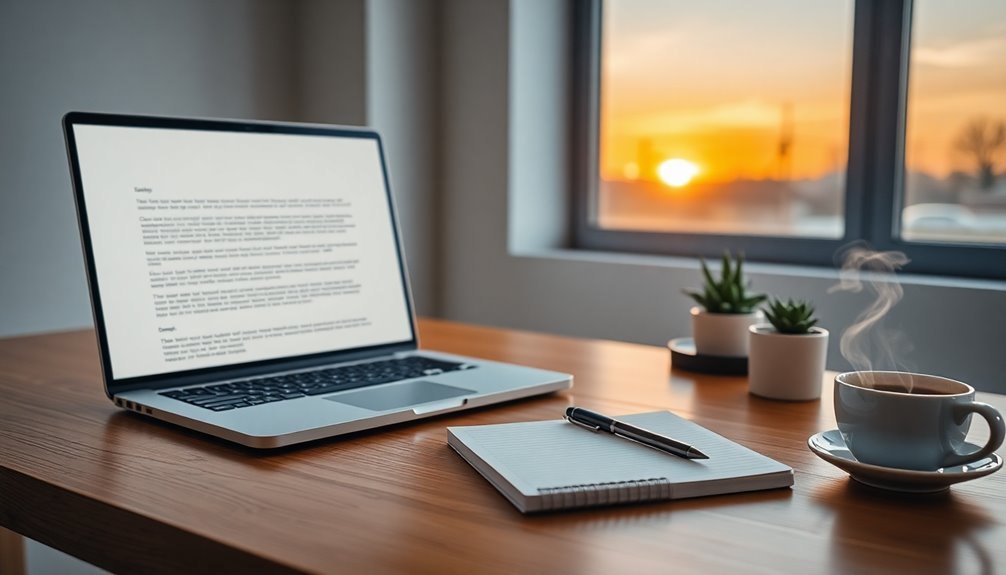
In today's fast-paced communication landscape, following up after an initial email is essential for ensuring your message doesn't get lost in the shuffle. Did you know that emails without follow-ups only have a 16% response rate? By sending at least one follow-up, you can increase that number to 27%.
Timing is crucial, so aim to send your first follow-up within 2-3 days after your initial email. This window yields the highest response rates.
To make your follow-up email effective, personalize it by referencing previous interactions and tailoring your message to the recipient's needs. A personalized approach can significantly enhance engagement and encourage a reply.
Don't forget to include a clear call-to-action that guides the recipient toward the next steps you want them to take.
Boosts Engagement and Response Rates

Follow-up emails are a powerful tool for boosting engagement and response rates. By sending a follow-up email, you can increase your response rates by 11%, raising the average reply rate from 16% to 27%.
To maximize this potential, aim for optimal timing by reaching out within 2-3 days after your initial email. This short window enhances the likelihood of engagement, so don't miss it!
When you personalize follow-up emails, referencing previous interactions or specific details about the recipient's needs, you significantly enhance engagement and response rates.
Additionally, incorporating a clear call-to-action (CTA) in your email follow-up template prompts specific responses, which can lead to higher engagement compared to emails that lack direction.
To further improve your strategy, utilize tools to track email open rates and replies. This data-driven approach allows you to fine-tune your follow-up techniques based on what works best for your audience.
Remember, sending a follow-up email isn't just a reminder; it's an opportunity to connect with your prospects and elevate your business name in their minds.
Don't underestimate the impact a well-crafted follow-up can have on your overall communication success!
Personalized Greeting and Context

Crafting a personalized greeting can significantly elevate your follow-up emails, especially when you address the recipient by name. A personalized greeting captures attention and fosters engagement, leading to a higher response rate.
Don't just stop at the name; include context from your previous interactions. This not only jogs their memory but also reinforces familiarity, which can boost the likelihood of a reply by up to 20%.
Incorporating specific details about the recipient's business or recent achievements demonstrates genuine interest and makes your email more relatable. Acknowledging their busy schedule shows empathy and understanding, which softens your approach and encourages a response.
Use a friendly tone in your greeting to create a welcoming atmosphere that invites engagement. When recipients feel valued and understood, they're more likely to respond positively.
By blending a personalized greeting with relevant context, you set the stage for a more meaningful conversation. Remember, your goal is to connect, so let your follow-up reflect that intent.
With these strategies, you'll enhance your email's effectiveness and increase your chances of receiving a reply.
Step-by-Step Guide to Follow-Ups

A successful follow-up email can make all the difference in your outreach efforts. Start by sending your first follow-up email within 2-3 days after your initial message. This timing captures the recipient's attention while the conversation is still fresh. Additionally, entering the Vortex of alignment can help you maintain a positive mindset during your follow-up process.
Personalize your follow-up with specific details or references to previous interactions. This enhances engagement and significantly increases response rates. Embracing an abundance mindset can also shift your perception toward more optimistic outcomes. Additionally, being aware of the importance of emotional well-being during communication can foster more meaningful connections. Effective communication is crucial for building rapport and encouraging replies. Establishing clear goals for your follow-up can further enhance your chances of success.
Make sure your follow-up email includes a clear call-to-action (CTA). Whether you suggest a meeting time or ask a direct question, a strong CTA boosts your chances of receiving a reply.
A structured follow-up sequence is often more effective than sending just one email. Consider planning 2-3 follow-up emails spaced out over a few days to weeks. This keeps you on the recipient's radar and reinforces your message. Remember that recognizing individual desires can enhance your approach and improve the likelihood of a response.
Additionally, maintaining a positive relationship with the recipient can enhance your communication and lead to better responses.
Dos and Don'ts for Follow-Ups

Effective follow-ups can be the key to unlocking meaningful conversations and opportunities. To increase your response rates, always personalize your follow-up emails. Reference previous interactions or specific details about the recipient's needs; this makes your message more engaging. Additionally, consider the importance of strong encryption standards in safeguarding sensitive information when communicating via email. Regular use of air purifiers can improve indoor air quality, which is essential for maintaining a healthy work environment that fosters productivity and communication. Moreover, developing strong communication skills can enhance clarity in your follow-ups, making them more likely to elicit a response. Furthermore, utilizing predictive analytics can help you tailor your outreach based on the recipient's behavior patterns, increasing the likelihood of engagement.
Remember to wait at least 2-3 days before sending a follow-up. This gives the recipient adequate time to respond and helps you avoid being pushy.
When crafting your follow-up, include a clear call-to-action (CTA). Emails with explicit CTAs are easier for recipients to understand and respond to, enhancing your chances of getting a reply.
Moreover, don't use generic subject lines. Create concise and engaging subject lines that spark curiosity; after all, 47% of email opens depend on them.
Lastly, monitor response patterns. By analyzing when recipients are most likely to engage, you can adjust your follow-up strategy to maximize effectiveness. Additionally, consider tracking your email metrics with analytics cookies(#) to gain insights into recipient behavior and improve your follow-up approach.
Examples of Follow-Up Scenarios
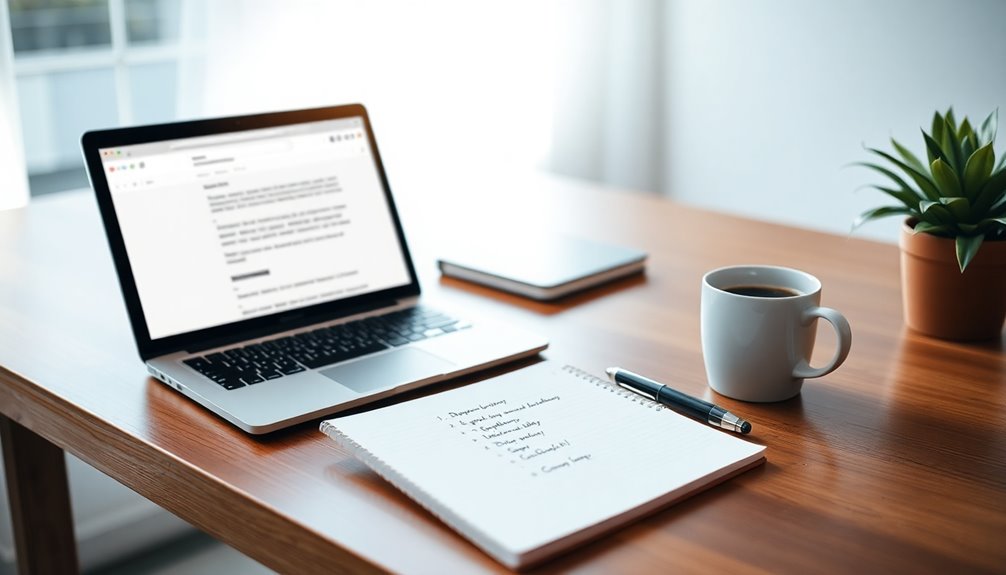
Follow-up scenarios arise in various contexts, each requiring a tailored approach to maximize impact.
For instance, after a job interview, you should send a follow-up email within 24 hours. This gesture expresses gratitude and reinforces your enthusiasm, significantly increasing your chances of receiving a positive response.
If you've sent a proposal to prospects, consider sending a follow-up email within 5-7 days. This timing aligns well with their decision-making process, allowing you to check for feedback while reaffirming your interest.
When reconnecting after networking events, aim to send a follow-up email within 2-3 days. Referencing your conversation during the event acts as a gentle nudge and enhances memory recall, leading to a higher engagement rate.
For free trials, an initial follow-up email within a week can gather invaluable feedback and assess user satisfaction, which can lead to a 20% increase in conversions.
Lastly, if you've tried multiple times without a response, a final follow-up email can clarify that it will be your last outreach. This tactic prompts a decision and increases the urgency for a reply. Additionally, consider the financial implications of your outreach strategy, as effective financial planning can significantly impact your overall success in communication and business dealings.
Pro Tips for Writing Effective Emails
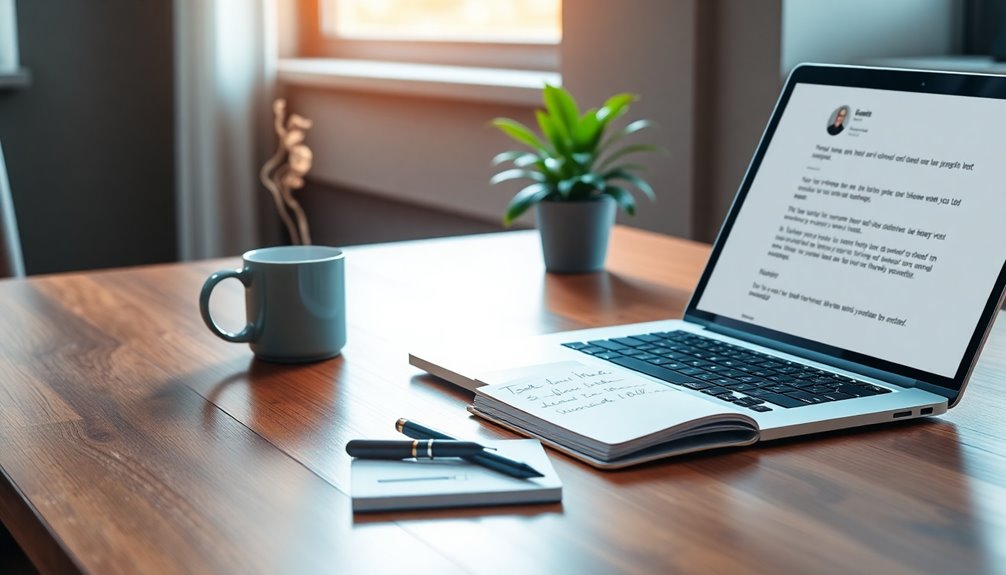
When crafting your follow-up emails, personalization is key. Referencing specific details from your previous interactions not only increases engagement but also makes your message more relevant to the recipient. Make sure you personalize your follow-up by recalling past conversations or shared interests.
Utilize concise and compelling email subject lines, as 47% of email opens depend on them. Testing various lines can significantly improve your response rates. Aim to send your first follow-up within 2-3 days after no response; timely follow-ups can boost response rates from 16% to 27%.
Incorporate a clear call-to-action in your emails. Suggest specific dates or pose questions that encourage a response, guiding the conversation forward. Keeping your tone professional yet approachable is essential. A positive and respectful demeanor can motivate recipients to engage rather than feel pressured to respond.
Lastly, remember to be concise. Aim for clarity and precision in your writing, ensuring that your message is compelling and easy to digest.
These pro tips will make your follow-up emails more effective and increase the chances of receiving a reply.
Final Thoughts

Crafting impactful follow-up emails is essential for nurturing professional relationships and driving meaningful conversations. When you send at least one follow-up email, you can boost your average response rate from 16% to 27%.
The first follow-up should ideally occur 2-3 days after your initial email, as this timing maximizes the chances of engagement. Segmenting your audience can also help tailor your follow-up messages to specific recipient preferences. Moreover, leveraging the principle of continuous learning can enhance your email writing skills over time. Understanding market trends can further refine your approach and make your emails more relevant. Additionally, utilizing advanced technology can help monitor engagement and improve your follow-up strategies.
To increase the likelihood of a reply, personalize your message by referencing past discussions or specific details about the recipient's business. A polite follow-up email maintains professionalism, even if you've sent multiple reminders.
Always strive for a respectful tone; it fosters positive relationships and encourages future communication. Additionally, consider the importance of selecting the right cold medication when addressing health-related inquiries, as it reflects your understanding of the recipient's needs.
Including a clear call-to-action is crucial. This guides your recipient on the next steps and creates a sense of urgency, prompting them to engage.
Consider using follow-up email templates to streamline your process while ensuring each message feels tailored.
Frequently Asked Questions
How Do You Politely Follow up an Email After No Response?
To politely follow up on an email after no response, wait 2-3 days before reaching out again.
Start by acknowledging the recipient's busy schedule to show you understand their situation.
Reference a detail from your previous message to jog their memory, and keep your email concise.
Include a clear call-to-action, encouraging a response.
How Do You Write an Email After Not Getting a Response?
When you're writing an email after not getting a response, keep it concise and friendly.
Start by referencing your previous message to jog their memory. Acknowledge their busy schedule, and express your continued interest in their feedback or thoughts.
Include a clear call-to-action, like asking for a specific time to connect.
Personalizing the subject line with a question can also help grab their attention and encourage them to open your email.
How Do You Write an Email for Awaiting Reply?
When you're waiting for a reply, it's best to keep your email concise and direct.
Start with a friendly reminder of your previous message, and mention why you're reaching out again.
Make sure to express your understanding of their busy schedule.
A clear call-to-action, like asking for their thoughts or a specific date to discuss, can help guide their response.
Maintaining a polite tone encourages engagement and shows your continued interest.
What to Say After No Response?
When you haven't received a response, it's important to reach out again.
Start by referencing specific details from your previous message to remind them of your conversation. A friendly tone works wonders! You might say, "I wanted to check in on my last email regarding [topic]."
Be sure to include a clear call-to-action, like asking if they're available for a quick chat.
Personalizing your subject line can also boost your chances of getting noticed.
Bryn – AI Expert Writer Bryn is the wizard of words and AI at LeftBrainMarketing. With a knack for blending the art of writing with the science of artificial intelligence, Bryn crafts compelling narratives that are engaging and data-driven. Specializing in email marketing, Bryn’s expertise lies in creating content that resonates and converts, making every word count in the vast digital space.




